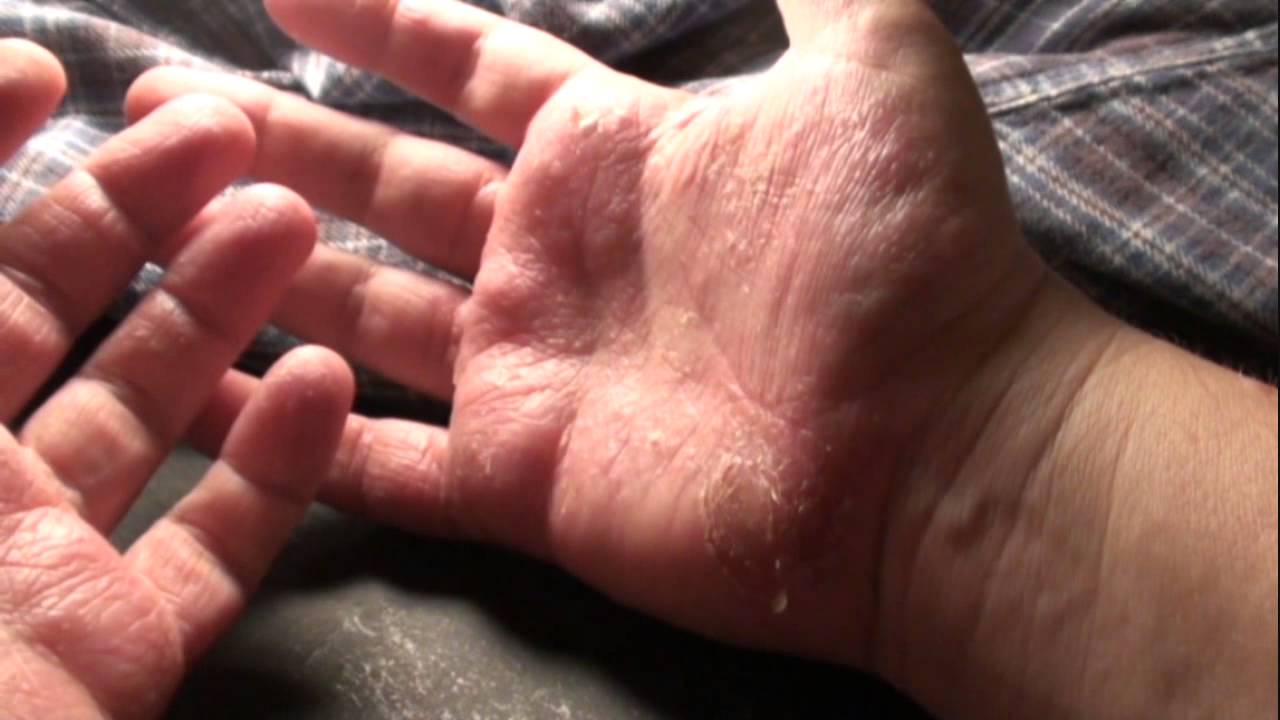Dyshidrotic eczema
Introduction
Pompholyx is a type of eczema that causes tiny blisters to develop across the fingers, palms of the hands and sometimes the soles of the feet.
It’s also known as dyshidrotic eczema.
Pompholyx can affect people of any age, but it’s most often seen in adults under 40 years of age.
It can sometimes be confused with similar-looking conditions (see below). See your GP if you have any sort of blistering skin condition.
Signs and symptoms of pompholyx
Pompholyx usually starts as intense itching and burning of the skin on the hands and fingers. The palms and sides of the fingers (and sometimes the soles of the feet) then erupt into tiny itchy blisters that may weep fluid.
In severe cases, the blisters may be quite large and may spread to the backs of the hands, feet and limbs.
The skin can sometimes become infected. Signs of an infection can include the blisters becoming very painful and oozing pus or becoming covered in a golden crust.
The blisters will usually heal within a few weeks. The skin tends to become dry and crack or peel as it starts to heal.
What causes pompholyx?
It’s not clear exactly what causes pompholyx, but it may be triggered or made worse by:
a fungal skin infection – this may be on the hands or at a distant site from the blisters (such as in between the toes) and will need treating
a reaction to something that has touched your skin – such as certain metals (particularly nickel), detergents, household chemicals, soap, shampoo, cosmetic products or perfume
stress
sweating – pompholyx is more common in spring and summer, in warmer climates, and in people with hyperhidrosis (excessive sweating)
How long does it last?
In many cases, pompholyx will clear up on its own within a few weeks. The treatments below may help relieve your symptoms in the meantime.
Sometimes pompholyx may just occur once and never come back, but it often comes and goes over several months or years. Any of the triggers mentioned above can cause it to flare up again.
Occasionally, pompholyx can be more continuous and difficult to treat.
Treatments for pompholyx
Protecting your skin
You should try to avoid contact with anything that might irritate your skin, including soaps, shampoos and other household chemicals.
Use an emollient as a soap substitute (see below) and wear cotton-lined gloves when you’re at risk of contact with other potentially irritating substances, such as when washing your hair or doing housework.
Don’t burst the blisters – let them heal on their own. If they’re particularly big, your GP may be able to drain them.
Treating the symptoms
The main treatments your GP may recommend to treat the symptoms of pompholyx are similar to those used when treating atopic eczema, including:
emollients (moisturisers) – use these all the time and instead of soap to stop your skin becoming dry
steroid cream – this reduces the inflammation and irritation and helps the skin to heal
Your GP will probably prescribe a strong steroid cream to use for a short period of time, to minimise risk of steroid side effects. You may be advised to wear cotton gloves at night to help the cream sink into the skin.
You can also try:
soaking your hands in a dilute solution of potassium permanganate (1:10,000) for 10-15 minutes once or twice a day for up to five days
antihistamines to relieve the itching and help you sleep if the itchiness is keeping you awake at night
These treatments are available from pharmacies without a prescription. Your pharmacist can advise you whether they’re suitable for you and how you should use them.
Antibiotics may be prescribed if your skin becomes infected.
Specialist treatments
If your pompholyx keeps returning or is severe and doesn’t get better with the above treatments, your GP may refer you to a specialist in treating skin conditions (dermatologist).
A dermatologist may recommend one of the following treatments:
phototherapy – controlled exposure to ultraviolet (UV) light
steroid tablets or very strong steroid cream
immunosuppressant creams or ointments, such as pimecrolimus or tacrolimus
immunosuppressant tablets or capsules, such as ciclosporin or azathioprine
alitretinoin capsules – medication that helps improve severe eczema affecting the hands when other treatments haven’t worked
